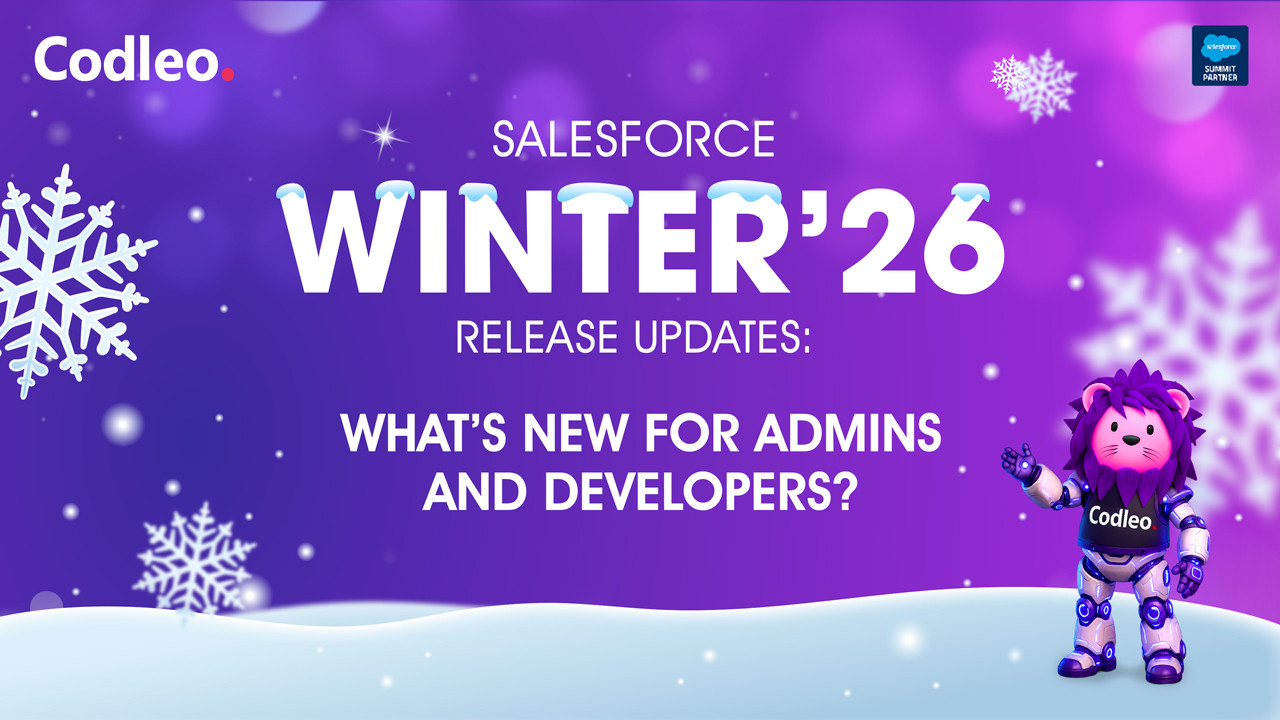Publish date:
In today’s fast-paced business world, being able to adjust and personalize your tools to fit your specific needs is crucial. Salesforce, a leading customer relationship management (CRM) platform, offers powerful options for customizing the system to meet your unique business needs. It means you can enhance your CRM without diving into complex coding, leading to smoother workflows, increased productivity, and overall business success.
Salesforce comes with a variety of built-in features and tools that can be customized to suit your specific needs. Using these native tools simplifies the process and ensures that everything works together seamlessly. By taking full advantage of Salesforce’s built-in options, businesses can streamline operations, boost user adoption, and save time and resources that would otherwise be spent on extensive custom development.
In this easy-to-follow guide, we’ll break down how you can configure and customize Salesforce. We’ll cover the native features available to help you tailor the platform to meet your business needs effectively.
Salesforce Configuration
To fully utilize the platform, Salesforce configuration is necessary. Without requiring sophisticated coding, it enables companies to customize Salesforce to match their unique requirements. Rather, configuration entails utilizing Salesforce's pre-existing features and settings to match the platform with your objectives and business processes.
Here are some straightforward examples of how you can use Salesforce’s point-and-click tools for configuration:
-
Creating Custom Fields: Example: Suppose your sales team needs to track extra details about leads that the standard Salesforce fields don’t cover. With the Object Manager, you can easily create a custom field like “Preferred Contact Method.” It allows your team to enter and track how each lead prefers to be contacted.
-
Designing Page Layouts: Example: Different teams within your organization may require different views to work efficiently. Using the Lightning App Builder, Salesforce Admins can design custom page layouts for various user profiles. For instance, you can create a sales-focused layout that highlights necessary fields and actions for your sales team, while a separate layout for customer support could focus on case-related details.
-
Implementing Workflows: Imagine you want to make the sales process easier after a lead is converted into an opportunity. Instead of doing everything manually, you can use Process Builder to automate these tasks. For example, once a lead is marked as "Converted," Salesforce can automatically create a new opportunity, update related records, and send notifications to your team. It saves time, reduces manual effort, and ensures consistency.
-
Setting Validation Rules: Before marking an opportunity as "Closed-Won," ensure key fields are completed for data accuracy. Use Salesforce's Validation Rule editor to enforce this requirement and confirm that all relevant information is provided before finalizing the record.
These examples show how Salesforce configuration can effectively meet your business needs without needing any coding.
Salesforce Customization: Unlocking Advanced Capabilities

Salesforce customization tailors the platform to your company’s specific needs, allowing for advanced features beyond the standard setup. It typically involves development using Visualforce pages, Apex triggers, and Lightning components. While customization provides your business more flexibility, it requires programming knowledge and must be handled with care.
When to Consider Customization
You should think about customizing Salesforce when:
-
Your business processes need more than what the default point-and-click tools offer.
-
You need unique features specific to your industry.
-
The standard Salesforce setup doesn’t fit your requirements.
Key Customization Options
-
Apex Triggers: Allow you to run custom actions before or after changes in Salesforce records, such as creating, updating, or deleting data.
-
Visualforce: Lets you design custom pages and user experiences, as well as smoothly connect data from outside systems.
-
Lightning Components: Help build interactive apps within Salesforce, making the platform more engaging and user-friendly.
Important to Remember
Customizations can be extremely powerful, but they also require proper planning. Custom code may need updates to stay in sync with Salesforce’s regular releases and new features. When done right, customization helps your business unlock Salesforce’s full potential in a way that fits exactly how you work.
Best Practices in Salesforce Configuration & Customization

Data Migration Considerations
Data migration is a crucial part of setting up and customizing Salesforce. It involves moving data from old systems into Salesforce, and it requires careful planning to avoid common issues. Here are some best practices to ensure a smooth migration:
-
Assess Your Data: Before starting the migration, evaluate the quality and completeness of your current data. Clean and remove duplicates to prevent problems after the migration.
-
Use Data Import Tools: Take advantage of Salesforce’s built-in data import tools or third-party solutions to transfer your data accurately and efficiently.
-
Migrate Data in Stages: Consider moving your data in phases to reduce downtime and minimize the risk of errors.
-
Set Up Data Validation Rules: Implement validation rules to maintain data accuracy throughout the migration process.
By following these practices, you can make sure that your data migration goes smoothly and that your Salesforce setup is accurate and reliable.
Governor Limits and Considerations
Salesforce governor limits are restrictions designed to maintain the platform’s performance. Here’s how to manage them effectively:
-
Regular Monitoring: Keep track of usage and performance metrics to spot and address potential issues before they become problems.
-
Bulk Processing: Use bulk processing methods for handling large amounts of data to stay within limits and improve efficiency.
-
Code Efficiency: Write efficient code to reduce the strain on governor limits. Apply bulk processing patterns, make selective queries, and use proper indexing.
Security and Access Control
Maintaining the security of your Salesforce instance is crucial. Properly managing security settings involves handling user permissions, profiles, and role hierarchy. Here’s what to consider:
-
User Permissions: Give users only the permissions they need based on their roles to ensure they have the least privilege necessary.
-
Profiles: Create profiles with specific access rights and assign them to users as needed.
-
Role Hierarchy: Set up a role hierarchy to manage data visibility and access throughout the organization.
By focusing on these areas, you can ensure your Salesforce setup is both efficient and secure.
User Training and Adoption
For successful Salesforce setup and customization, getting users on board is key. Here are some effective training strategies:
-
Interactive Training: Hold hands-on training sessions where users can work with the system directly and learn its features.
-
Documentation: Provide clear and detailed documents about new configurations, features, and workflows for users to refer to.
-
User Feedback: Ask for user feedback and address any concerns quickly to help create a positive response to system changes.
Integration and Extending Salesforce Functionality
Connecting Salesforce with other tools can boost its capabilities. Here’s how to ensure smooth integration:
-
API Integrations: Use Salesforce APIs for secure and scalable connections with external systems.
-
Data Mapping: Properly map data fields between systems to keep data consistent.
-
Testing: Thoroughly test integrations to find and fix any issues before going live.
These practices will help ensure that both user training and system integrations are handled effectively, leading to a smoother Salesforce experience.
Monitoring, Auditing, and Troubleshooting
Keeping your Salesforce instance running smoothly requires regular monitoring, auditing, and troubleshooting. Here are some best practices to follow:
-
Change Monitoring: Use monitoring tools to keep track of changes and maintain an audit trail. This helps you see who made changes and when.
-
Documentation: Record details about custom code and modifications to make troubleshooting and future updates easier.
-
Issue Resolution: Set up a process to quickly address and resolve common configuration and customization issues.
By following these practices, you can maintain a strong, secure, and effective CRM system that meets your organization’s specific needs.
Backup and Data Protection
In today’s fast-paced business environment, regular backups of Salesforce data and metadata are crucial. These backups help prevent data loss from accidental deletions, system errors, or security issues. Without a strong backup plan, businesses risk losing important Salesforce data, which can negatively impact operations and customer relationships.
How to handle backups based on the type of changes in Salesforce?
-
Configuration Changes: Changes to Salesforce configuration are usually related to metadata. To manage and transfer these changes between different environments, use tools like Change Sets and Salesforce DX. These built-in tools make it easy to track and move configuration changes.
-
Code-Based Customizations: When dealing with code customizations, a more thorough backup strategy is needed. Utilize version control systems, such as Git, to track code changes and maintain a comprehensive history. Also, use comprehensive data backup tools to protect both configuration and code elements.
By following these backup strategies, you can protect your Salesforce data and configurations, keeping your system secure and operational.
Summary
In the ever-changing world of Salesforce, having a solid backup strategy is essential for protecting your Salesforce investment and ensuring data integrity and business continuity.
As we wrap up this guide on Salesforce configuration and customization, let's review the key points and emphasize the importance of ongoing learning and exploration within the Salesforce ecosystem.
-
Configuration vs. Customization: It's crucial to understand the difference between configuration and customization. Configuration uses built-in features to adapt Salesforce, while customization, which often involves coding, allows for more detailed adjustments.
-
Point-and-Click Tools: Tools like Process Builder, Flow Builder, and Lightning App Builder are incredibly powerful. They let users make significant changes without needing to write complex code.
-
Code-Based Customization: For more advanced needs, such as using Apex triggers, Visualforce pages, or Lightning components, some programming knowledge is required. This allows for greater flexibility and tailored solutions.
-
Best Practices: Effective data migration, managing governor limits, setting up strong security measures, training users, integrating with other tools, and having a good backup plan are all important for a successful Salesforce setup.
-
Ongoing Learning: The Salesforce platform is always evolving with new features and updates. Keeping a mindset of continuous learning will help you stay up-to-date and make the most of what Salesforce has to offer.
By focusing on these areas, you can better navigate Salesforce’s complexities and maximize its potential for your organization.
Ready to elevate your Salesforce experience? At Codleo Consulting, we are your trusted Salesforce consultants and a leading Salesforce consulting firm, dedicated to crafting customized solutions that meet your unique business needs. Whether you’re looking to streamline processes, integrate new features, or enhance your CRM strategy, our expert team is here to help. Contact us today to discover how we can transform your Salesforce platform and drive your business forward.















